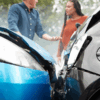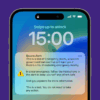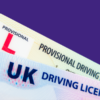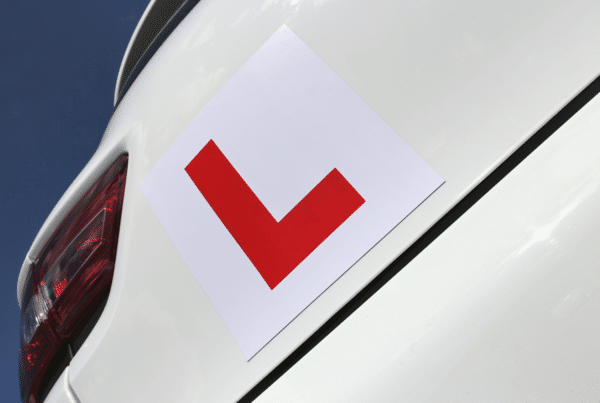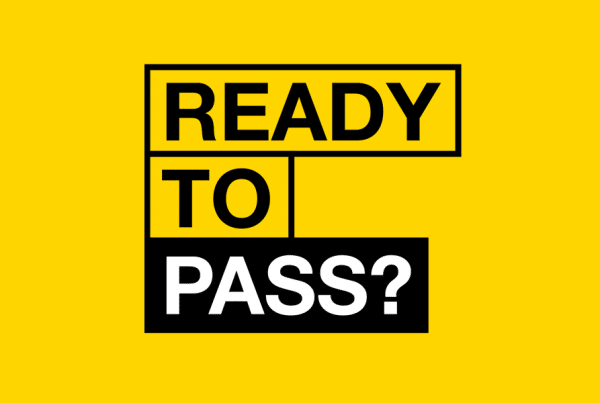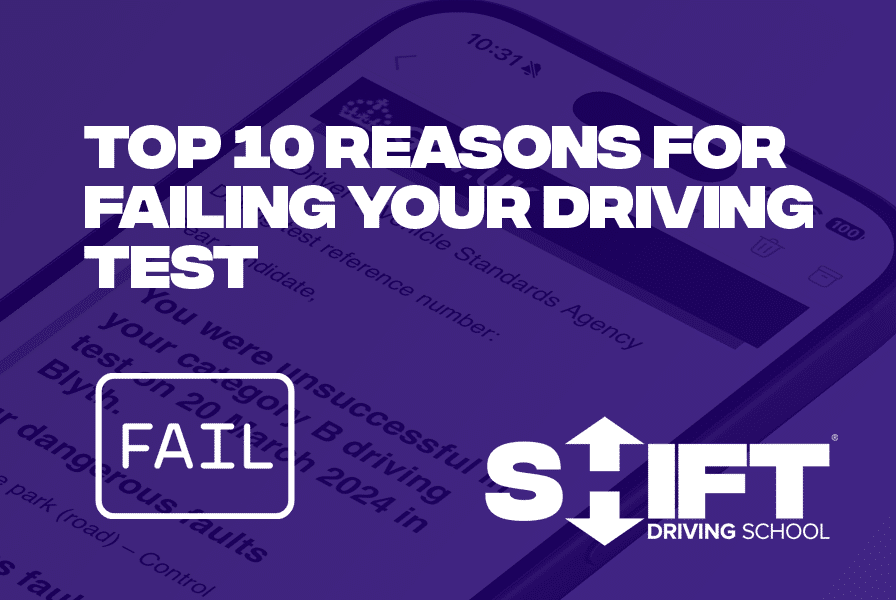
So, you’re ready to hit the road, but before you get too confident, let’s talk about the top 10 reasons people fail their driving test in Great Britain. Between April 2023 and March 2024, these mistakes tripped up more learners than a road full of potholes. Read on, take notes, and maybe, just maybe, you’ll avoid being another statistic.
1. Not Making Effective Observations at Junctions
You’ve probably heard this a million times, but there’s a reason why it’s at the top of the list. Observations at junctions aren’t optional—they’re your lifeline. Before you even think about pulling into a new road, you need to ensure it’s safe. This means taking the time to really look and judge the speed of oncoming traffic. Miss this step, and you could force another vehicle to slow down dramatically or, worse, cause an accident.
Failing to judge the speed of an approaching vehicle
Imagine turning left or right from a minor road. You glance, but misjudge how fast that car is zooming toward you. Result? You pull out and they have to slam on their brakes. Not good.
Entering a roundabout with a vehicle approaching from the right
You approach a roundabout, see a car on the right, but decide you’ve got time. Spoiler alert: You don’t, and now they’re angrily braking.
Making no effective observations at all
Whether it’s at a junction or joining a dual carriageway, not looking at all is a ticket to fail town. If the examiner has to hit the brakes for you, just know your test is as good as over.
More than 1 in 3 collisions reported in Great Britain in 2022 were caused by people driving not looking properly.
Source: Factors contributing to collisions and casualties (table RAS0701).
2. Not Using Mirrors Correctly When Changing Direction
Mirrors aren’t just there to check your hair. They’re crucial when changing lanes or direction. Picture this: you’re on a dual carriageway, you check your mirrors (barely), and start to change lanes, only to have a car in your blind spot honk like there’s no tomorrow. If you’re not using those mirrors properly, your examiner might start using their imaginary brake pedal—and that’s not a good sign.
Exiting a roundabout without checking mirrors
Failing to check your mirrors before exiting a roundabout can lead to cutting across the path of a vehicle behind you, which is a solid way to fail.
Causing a vehicle to slow when changing lanes on a dual carriageway
You check your mirrors, see a car approaching, but decide to change lanes anyway. The other driver’s forced to slow down, and your examiner’s forced to mark down a fault.
Trying to change lanes on a roundabout when a vehicle is directly alongside
This one’s a recipe for disaster. If you don’t check your mirrors and try to move over when someone’s right next to you, your examiner might have to grab the wheel—and that’s game over.
3. Not Moving Off Safely
Whether you’re pulling out from behind a parked car or starting off at the side of the road, you need to make sure it’s safe to do so. Forgetting to check your blind spot or misjudging the speed of oncoming traffic can turn a simple manoeuvre into a dangerous situation. If your idea of moving off safely involves making another driver slam on their brakes, then it’s time for a reality check—and maybe a few more lessons.
Moving off from behind a parked vehicle into the path of an approaching vehicle
You check your mirrors and blind spot but still end up moving into the path of a car. If they have to slow down, it’s a bad move.
Repeatedly moving off from the side of the road with no blind spot checks
Blind spots exist for a reason, and ignoring them is like playing Russian roulette with other road users. If you keep skipping this step, expect to fail.
Not making any rear observations when moving off after an emergency stop
You’ve just done an emergency stop, and now you’re moving off without checking behind you. This isn’t just a fail; it’s reckless.
4. Incorrect Positioning When Turning Right at Junctions
Turning right isn’t rocket science, but apparently, it’s harder than it looks. Whether it’s positioning yourself too far to the left and blocking traffic or forgetting that the right-hand lane exists, poor positioning can confuse other drivers and leave you stranded in the middle of the road. Get it right, and you’ll glide through your test; get it wrong, and you might as well kiss that pass certificate goodbye.
Positioning in the left-hand lane when turning right at a roundabout
If you use the left-hand lane to turn right at a roundabout, you’re going to confuse everyone else on the road, leading to some serious honking and, of course, a test fail.
Obstructing traffic when you wait to turn right
Positioning too far left while waiting to turn right can block following traffic, causing delays. If there’s enough room for cars to pass, make sure you’re giving them the space.
When turning right at the end of a road, positioning incorrectly to the left
If you’re turning right but find yourself positioned on the left, you’re setting yourself up for confusion and potentially blocking other vehicles. Stick to the centre and you’ll be in the clear.
5. Not Responding Appropriately to Traffic Lights
Traffic lights are simple—red means stop, green means go, right? Apparently not. Whether it’s hesitating at a green light when the junction is clear or, worse, trying to beat a red light, getting it wrong here is a major fail. Remember, those lights are there for a reason, and it’s not just to add a bit of Christmas cheer to the roads.
Failing to react to a red traffic light
Running a red light? That’s an automatic fail. Not much more to say here, just don’t do it.
Not moving when the light’s green and the junction’s clear
If you’re at a green light and the road ahead is clear, sitting there is only going to get you a honk—or a fail.
Entering a junction when it’s not clear
Green means go, but only if you’re not going to block the junction. If the traffic’s backed up, wait it out.
There were 1,839 casualties in Great Britain in 2022 where people disobeying traffic lights was a factor in the collision.
Source: Factors contributing to collisions and casualties (table RAS0701).
6. Not Having Proper Control of the Steering
If your steering is more erratic than a toddler on a sugar high, you’re in trouble. Whether it’s not steering enough and mounting the kerb, or steering too late and veering onto the wrong side of the road, poor control will make your examiner wish they’d taken the bus instead. Keep it smooth and steady, and your chances of passing will steer in the right direction.
Repeatedly not steering enough or steering late when turning left
Understeering at junctions can cause issues for other road users, like making it impossible for them to fit alongside you when turning right.
Not steering enough when going around a bend
Not turning the wheel enough can send you up onto the pavement—not exactly where you want to be.
Repeatedly mounting the pavement when pulling up on the left
If you keep driving onto the pavement every time you pull up, it’s time to go back to basics.
More than 1 in 10 reported collisions in Great Britain in 2022 were caused by someone making a poor turn or manoeuvre.
Source: Factors contributing to collisions and casualties (table RAS0701).
7. Not Responding Correctly to Traffic Signs
Ignoring traffic signs is like ignoring a text from your other half—nothing good will come of it. Whether it’s blowing past a ‘no entry’ sign or deciding that ‘keep left’ is just a suggestion, not following the rules can end in failure. Those signs are there to keep you safe, so make sure you’re paying attention—or prepare for a repeat test.
Acting late or not at all to speed limit changes
Speed limits change for a reason—usually because the road conditions require it. Ignoring them or reacting too late is a big mistake.
Going to the wrong side of a ‘keep left’ sign
If a sign tells you to keep left, you better do it. Going to the wrong side is a sure way to fail.
Driving in a bus lane
Bus lanes are for buses. If you don’t want to fail, stay out of them during restricted times.
8. Not Responding Correctly to Road Markings
Road markings might look like they’re just there to add some flair to the tarmac, but they’re actually vital for safe driving—when they’re actually there and visible (looking at you, Gateshead). Whether it’s straddling lanes at a roundabout or ignoring double white lines, if you’re not respecting the markings, you’re steering straight toward a fail. Give them the respect they deserve, and you’ll be one step closer to passing.
Not following direction arrows on the road
If an arrow says turn left, and you go straight or right, you’re in trouble. The same goes for getting into the wrong lane and trying to turn where you shouldn’t.
Straddling lanes on a roundabout
Roundabouts are confusing enough without someone deciding to drive in two lanes at once. Stick to your lane and respect the markings.
Ignoring a box junction
Box junctions are there to keep traffic flowing. Entering one when the exit isn’t clear is a sure way to block traffic and earn a fault on your test.
9. Poor Positioning on the Road During Normal Driving
If you’re constantly driving too close to the kerb or the centre of the road, you’re making everyone else nervous. Good positioning is key to safe driving—stick to your lane, keep a safe distance from the kerb, and for goodness’ sake, don’t hog the right-hand lane unless you’re overtaking. Otherwise, your driving test might take a wrong turn.
Repeatedly driving too close to the kerb or centre of the road
If you’re constantly driving too close to the kerb, you’re putting pedestrians at risk. Too close to the centre? Now you’re endangering oncoming traffic.
Unnecessarily driving in the right-hand lane of a dual carriageway
The right-hand lane is for overtaking, not cruising. If you’re hanging out there for no reason, you’re breaking the rules.
Cutting across the normal road position when going ahead at a roundabout with no lane markings
If there are no lane markings, stick to the normal position and don’t cut across the roundabout like it’s your personal racetrack.
10. Not Driving at a Safe and Reasonable Speed
Speed is a tricky one—you don’t want to crawl along at a snail’s pace, but you also don’t want to break the sound barrier. Whether it’s blasting through a 30mph zone at 40 or failing to slow down in bad weather, not adjusting your speed to the conditions is a common reason for failure. Keep an eye on those speed limits and road conditions, and you’ll avoid becoming a statistic.
Driving over the speed limit
If you’re in a 30mph zone and still pushing 40, you’re not just risking a fail—you’re risking a ticket too. Slow down and respect the limits.
Not adjusting your speed to the road conditions
Speed limits aren’t the only factor in safe driving. Whether it’s a busy high street, bad weather, or a sharp bend, you need to adjust your speed accordingly. Going too fast can lead to loss of control—and a failed test.
In 2022, driving too fast for the conditions or exceeding the speed limit contributed to numerous road accidents in Great Britain. Speed might thrill, but it can also kill, so keep it in check.
Source: Factors contributing to collisions and casualties (table RAS0701).
So, there you have it—the top 10 reasons people fail their driving test in Great Britain. If any of these sound like something you’ve done, it’s time to hit the brakes and work on those areas with your Driving Instructor. Driving isn’t just about passing a test; it’s about being safe on the road, for life. Nail these skills, and you’ll be one step closer to waving that pass certificate in the air like you just don’t care. Good luck, and drive safe!


